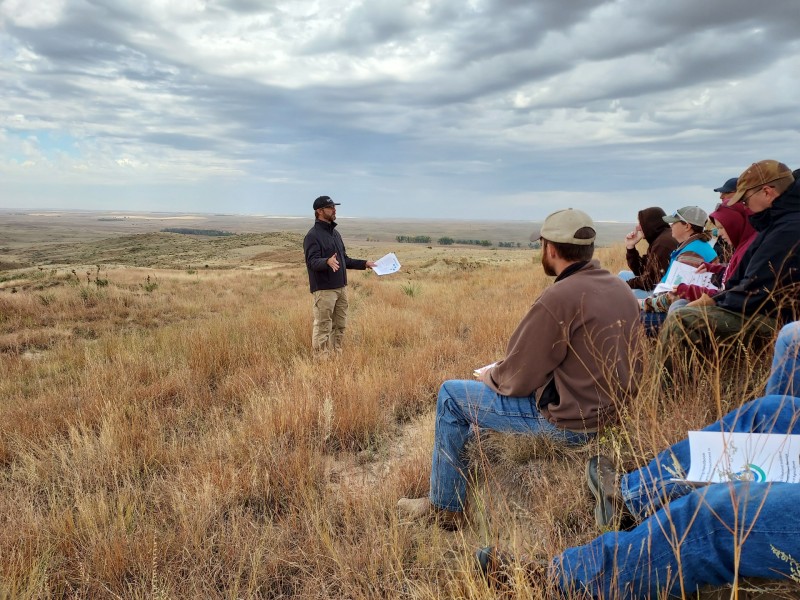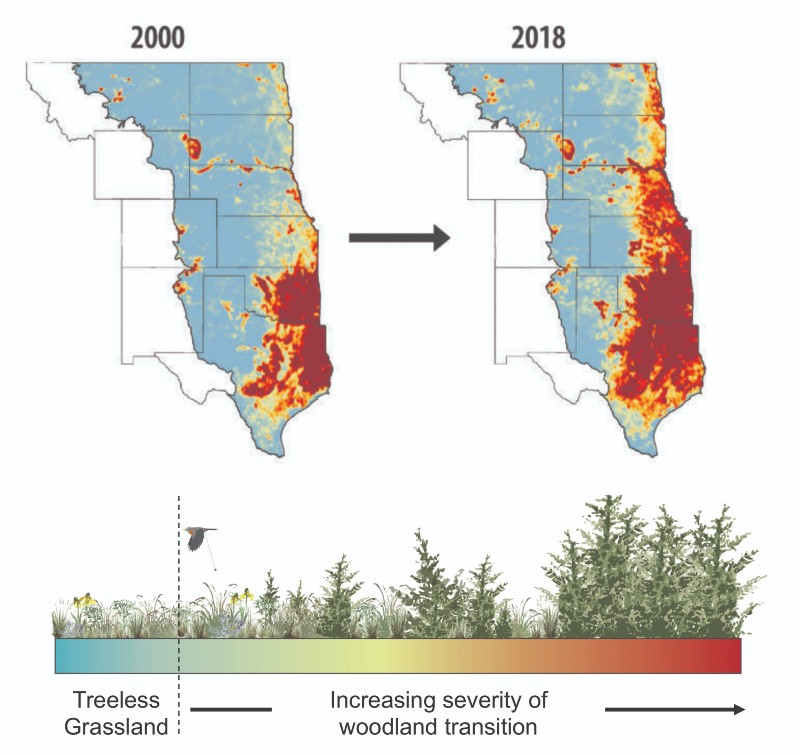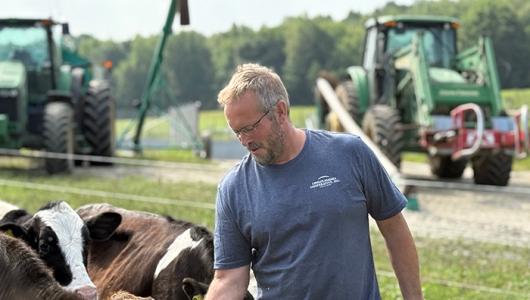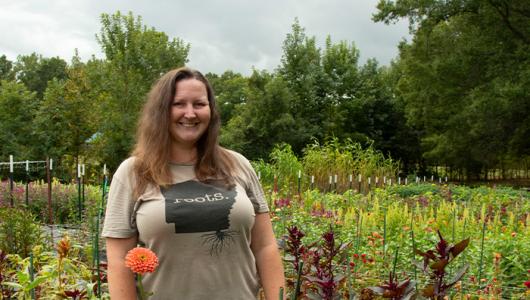In this Ask the Expert, Dr. Dirac Twidwell, Natural Resources Conservation Service (NRCS) Working Lands for Wildlife (WLFW) Science Advisor and Associate Professor at the University of Nebraska outlines how landowners can work together to protect and conserve grasslands through conservation.
Dr. Twidwell is responsible for conserving grasslands on the Great Plains through science-backed efforts that span ownership boundaries. His research and publications have identified the largest remaining continuous grasslands in the United States and have outlined a ‘call to action’ to protect and preserve these invaluable biomes.
He also runs the Large-Scale Rangeland Conservation Lab at the University of Nebraska-Lincoln, which focuses on providing a framework for ecosystem management across multiple states. Dr. Twidwell recently co-authored Reducing Woody Encroachment in Grasslands: A Guide for Understanding Risk and Vulnerability that provides the first-ever framework for addressing woody encroachment in the Great Plains.

What are the biggest threats facing America’s grasslands and landowners in the Great Plains?
The two biggest threats facing America’s grasslands are industrialization, coupled with commercial row-crop agriculture, and afforestation or planting trees in treeless ecosystems, which leads to woody encroachment. As trees spread and become denser, they reduce water supplies, decrease forage for livestock and wildlife, and cause hotter, harder-to-control wildfires.
In the Great Plains, woody encroachment and land use conversion are now occurring at the same rate, so it’s important to help landowners invest in conserving grasslands and prevent land use conversion and woody encroachment.
Tell us about the approach in the new guide for addressing woody species.
The guide does a few things differently. First, it provides a holistic strategy that focuses on vulnerable grasslands by helping landowners cut off seeds, the biological mechanism that allows trees to expand.
Second, it recognizes the scale of this problem and provides solutions to work at that scale. For too long, we’ve focused on a single ranch or landowner, which is unfair and does little to prevent a biome-scale collapse. Woody encroachment isn’t just a local problem, it’s a biome-wide problem. The guide was co-produced through partnerships with producers and landowner networks that are working at large scales (100,000 + acres) and leverages what we’re learning from these efforts.
Finally, it shows what landowners and partners can do to save our grasslands by combining a strategy to cut off the underlying ecological process of woody expansion with good planning informed by new spatial technologies.

How can the guide help landowners?
Landowners can follow our 8-step approach to manage woody encroachment on their land.
- Assess the context and scale of woody plant encroachment
- Determine your potential to partner with neighbors
- Map the stages of encroachment and vulnerability in the landscape
- Establish core areas
- Defend the core
- Grow the core
- Mitigate impacts
- Monitor outcomes, adapt over time and grow landowner coalitions
Through these steps landowners can assess what areas of their land are at risk, partner with neighbors to scale results, map the stages of encroachment, and identify, protect, and grow areas of intact grasslands. Landowners can contact their local NRCS office to learn more about programs and technical assistance available to manage woody encroachment on their land.
How do state efforts, like the state-led Great Plains Grassland Initiatives, fit into the big picture of WLFW’s vision for conservation solutions that benefit wildlife and landowners?
Simply put, these state efforts are critical. Working Lands for Wildlife is an approach to conservation that identifies key threats, produces recommendations on how to address those threats, and promotes voluntary conservation solutions that benefit landowners and wildlife, but it doesn’t provide funding directly. State-led Great Plains Grassland Initiatives aligned with the WLFW’s Framework for Conservation Action in the Great Plains are incorporating WLFW’s approach, leveraging science, and directly helping landowners and wildlife.
There are a lot of other partners beyond NRCS that are involved, and these state-level initiatives are part of broader efforts to conserve grasslands. For example, these efforts serve as the NRCS’s contribution to the Central Grasslands Roadmap a broad collaborative effort to conserve grasslands from Mexico to Canada.
Where can I find more information?
To learn more about conserving grasslands on your operation, visit Working Lands for Wildlife or farmers.gov/conservation. To learn more about NRCS programs, contact your local service center.
Greg M. Peters is a Working Lands for Wildlife Communications Coordinator. He can be reached by email at info@sagegrouseinitiative.com. For more details, read the full interview with Dr. Twidwell.


